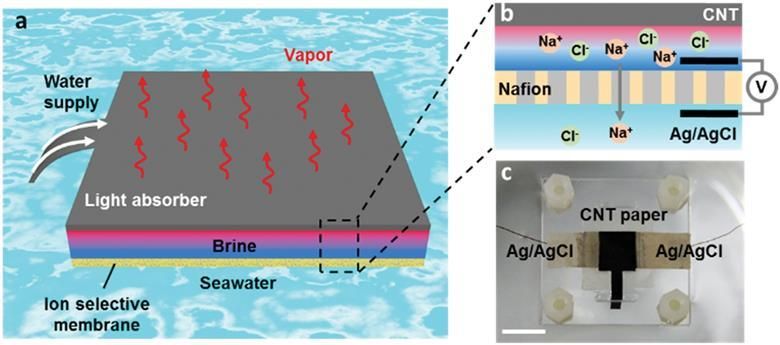Solar Desalination Meets Power Generation
Published on by Water Network Research, Official research team of The Water Network in Technology
Scientists in China have constructed a device that simultaneously generates fresh water and electricity from seawater.
Wave and tidal power may be more familiar systems for generating so-called blue energy, but you can also harness energy using the salinity difference between seawater and freshwater.
New research from scientists at Huazhong University exploits this concept. They have shown for the first time that it’s possible to couple solar desalination with power generation.
The team constructed a device, consisting of a light absorbing filter paper modified with carbon nanotubes above an ion-selective membrane, that floats on water. Solar energy hitting the device heats water on its surface so it evaporates; condensing this vapour gives fresh water.
But as water molecules leave the device’s surface, the salt concentration there increases dramatically relative to the seawater underneath – a trait researchers have previously neglected. ‘The energy density of this salinity difference could be six times higher than the difference between river water and seawater,’ explains Jun Zhou, who led the research.

The hybrid system makes use of the wasted salinity generated during solar-steam production
Source: Royal Society of Chemistry
Zhou says the membrane‘s selectivity is key to combining the two processes. ‘It only allows positive ions to go through, which induces a charge imbalance on the two sides – generating an electrical potential as well as current from redox reactions at the electrodes.’
Source: Chemistry World
Media
Taxonomy
- Saline Water
- Energy
- Desalination
- Solar Desalination
- Sea Water Desalinisation
- Energy
- Desalination